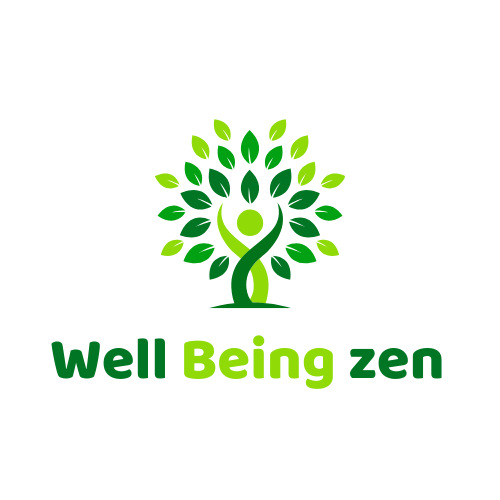Finding effective ways to reduce stress at the workplace is no longer a luxury; in today’s demanding world, it is an absolute necessity for our mental and physical well-being. It’s past midnight on a Saturday here in Pune, a time that should be reserved for rest and peace. Yet, if you’re reading this now, chances are the stress from your work week has followed you home, clinging to your thoughts and stealing the calm from your weekend.
The constant pressure of deadlines, the never-ending stream of emails, and the “always-on” culture can leave you feeling frazzled, anxious, and heading straight for burnout. You feel the tension in your shoulders, you struggle to sleep, and you find it impossible to truly switch off.
While we can’t always change the demands of our jobs, we can fundamentally change our relationship with the stress they create. It’s about learning to create small pockets of peace in the middle of chaos. This isn’t about a massive life overhaul; it’s about integrating simple, powerful habits into your day. Let’s explore seven practical and simple ways to reduce stress at the workplace and reclaim your sense of calm.
Table of Contents
The Myth of ‘Leaving Work at Work’
In a world of smartphones and laptops, the line between our professional and personal lives has become incredibly blurred. The office is no longer a physical place we leave at 6 PM; it’s a notification in our pocket, an email that arrives at 10 PM, a worry that wakes us up at 2 AM. Acknowledging this reality is the first step. The goal is not to pretend this pressure doesn’t exist, but to build a toolkit of workplace stress management techniques that empower you to navigate it with greater ease.
Your Toolkit for a Calmer Workday: 7 Practical Ways to Reduce Stress
These strategies are designed to be discreet, easy to implement, and incredibly effective.
1. The 5-Minute Mindful Start
How you begin your workday sets the tone for the next eight hours. Instead of diving headfirst into the chaos of your inbox, give yourself five minutes of intentional calm.
- Why It Works: This practice shifts you from a reactive to a proactive state. It grounds you before the day’s demands can pull you in a hundred different directions.
- How to Do It: Before you open your laptop or check your first email, sit at your desk and simply breathe. Close your eyes, take three deep, slow breaths, and set one simple, positive intention for the day (e.g., “Today, I will focus on one task at a time”).
2. Master the “Micro-Break”
The brain isn’t designed for eight hours of continuous, focused work. Pushing through without breaks is a direct path to mental fatigue and heightened stress.
- Why It Works: Short, scheduled breaks prevent mental burnout, improve focus, and reduce the build-up of stress hormones. This is a key strategy for burnout prevention.
- How to Do It: Try the Pomodoro Technique: Work with focused intensity for 25 minutes, then take a 5-minute break completely away from your task. Stretch, walk to the water cooler, or look out a window. After four cycles, take a longer break.
3. Practice the 4-7-8 Breath at Your Desk
When you feel a wave of anxiety or overwhelm, this discreet breathing technique is your superpower. It is one of the most immediate ways to reduce stress at the workplace.
- Why It Works: This specific breathing pattern is a natural tranquilizer for the nervous system. It forces a reset of your autonomic nervous system, moving you from a “fight-or-flight” state to a “rest-and-digest” state.
- How to Do It:
- Exhale completely through your mouth.
- Close your mouth and inhale quietly through your nose for a count of 4.
- Hold your breath for a count of 7.
- Exhale completely through your mouth with a whooshing sound for a count of 8.
- Repeat this cycle 3-4 times.
4. Create a “No-Tech” Lunch Break
Eating lunch hunched over your keyboard while scrolling through your phone is not a break. It’s just a different kind of work.
- Why It Works: Stepping away from screens allows your brain and eyes to rest. It promotes mindful eating, which improves digestion, and provides a true mental reset that can significantly lower stress levels for the second half of your day.
- How to Do It: Make a rule to eat your lunch away from your desk. If you can, go outside for a few minutes. If not, find a breakroom or even a different chair. Put your phone away and focus on your food.
5. The “Single-Task” Challenge
Multitasking is a myth. What we’re actually doing is rapidly switching between tasks, which is incredibly stressful for the brain and highly inefficient.
- Why It Works: Focusing on one single task at a time reduces cognitive load, decreases feelings of overwhelm, and improves the quality of your work.
- How to Do It: Turn off notifications. Close unnecessary tabs. Choose one priority task and commit to working on only that for a set period. This is one of the most effective ways to reduce stress at the workplace and boost productivity simultaneously.
6. Organize Your Physical and Digital Workspace
A cluttered environment often leads to a cluttered mind. The visual chaos of a messy desk or a desktop with a hundred icons can subconsciously add to your stress levels.
- Why It Works: Bringing order to your environment creates a sense of control and calm. It reduces distractions and saves the mental energy you would otherwise spend looking for things.
- How to Do It: Take 10 minutes at the end of each day or week to tidy your desk, organize your digital files into folders, and clear your desktop.
7. The End-of-Day Shutdown Ritual
Just as you start your day with intention, end it with intention. A “shutdown ritual” signals to your brain that the workday is officially over.
- Why It Works: This conscious act of closing down creates a clear boundary between your work life and your personal life, making it easier to mentally disconnect and be present at home.
- How to Do It: At the end of your workday, take five minutes to: write down your to-do list for tomorrow, organize your desk, and say a specific phrase to yourself like, “My workday is now complete.” Then, close your laptop and, as much as possible, resist the urge to check emails again.
Conclusion: Weaving Calm into Your Corporate Life
You don’t need to wait for your next vacation to find relief from work stress. The power to create a calmer, more manageable workday lies in these small, consistent actions. Learning how to deal with stress at work is a practice, a skill you can build day by day.
Choose just one of these strategies to focus on this coming week. Notice how it feels. Be patient and compassionate with yourself. You are not just managing stress; you are actively reclaiming your well-being and your peace of mind.
Here’s to a weekend where your mind can truly be at rest.
What’s one small change you will try to make this coming week to reduce stress? Share your commitment with the Well Being Zen community in the comments below!




